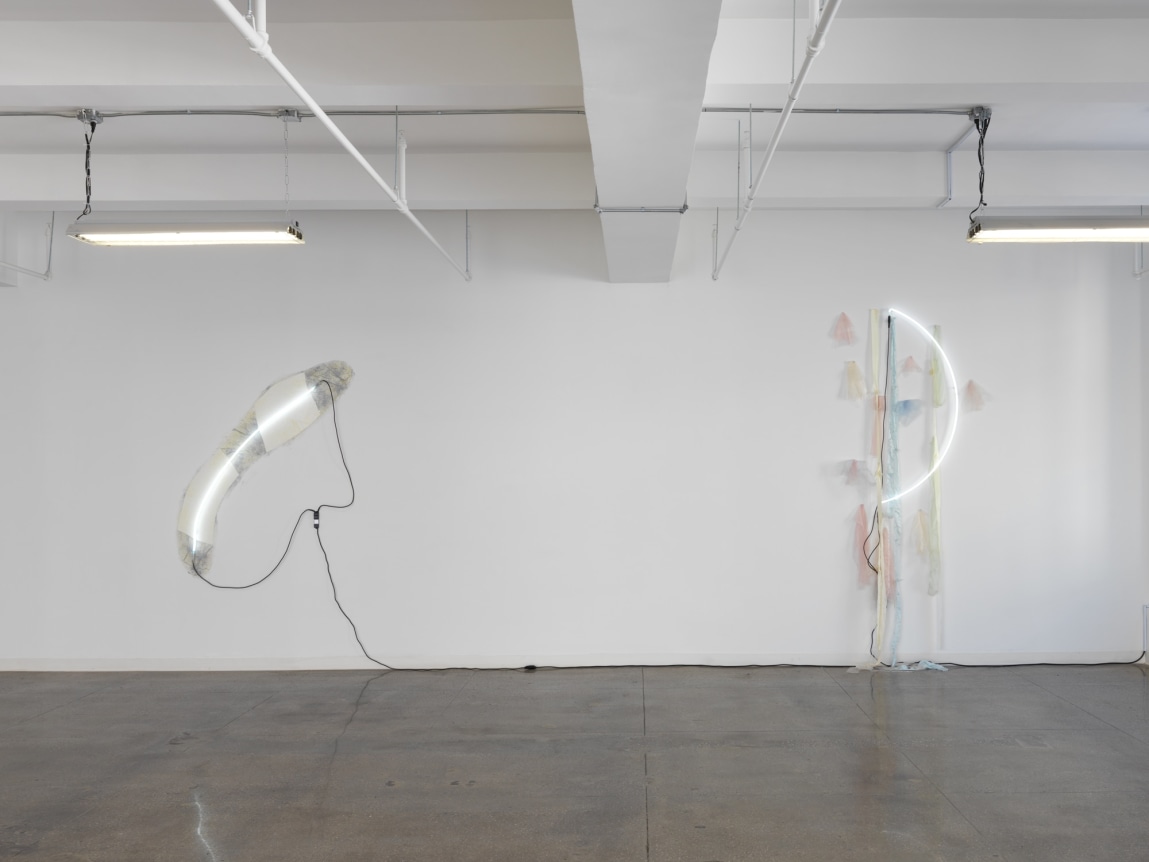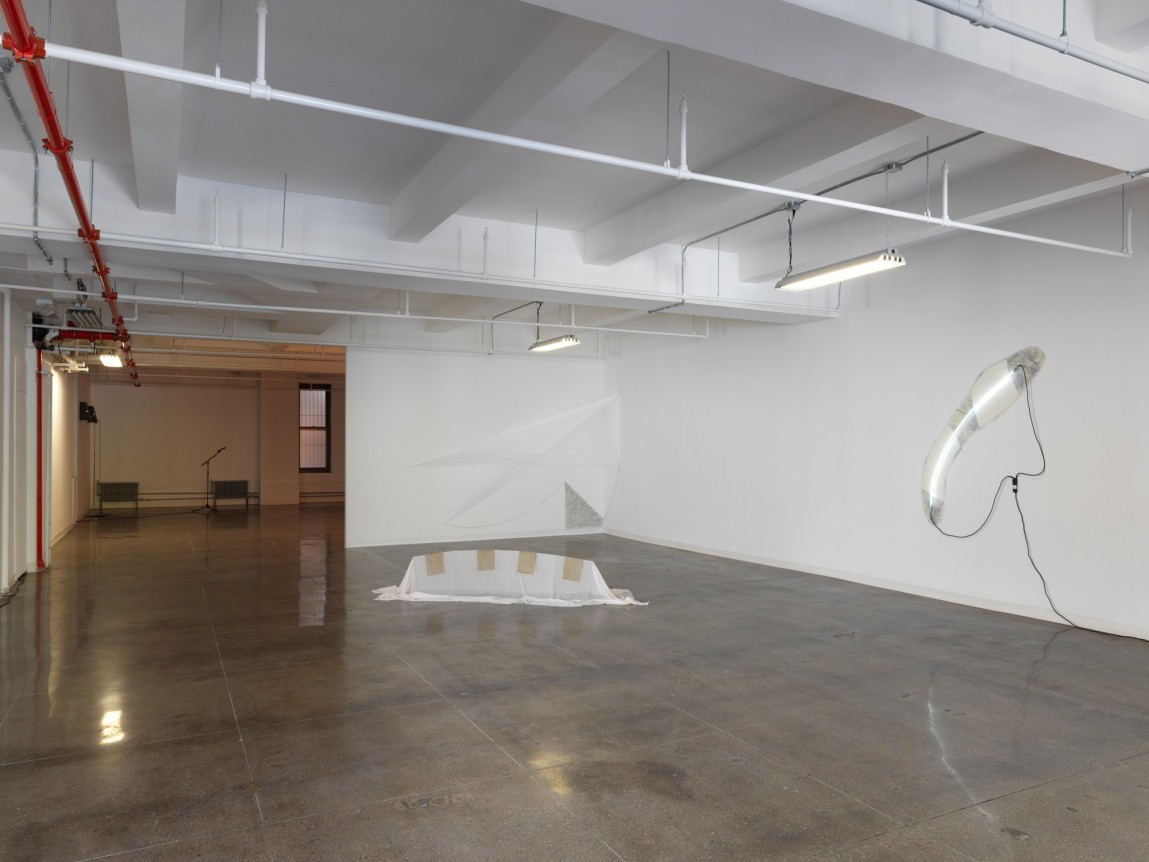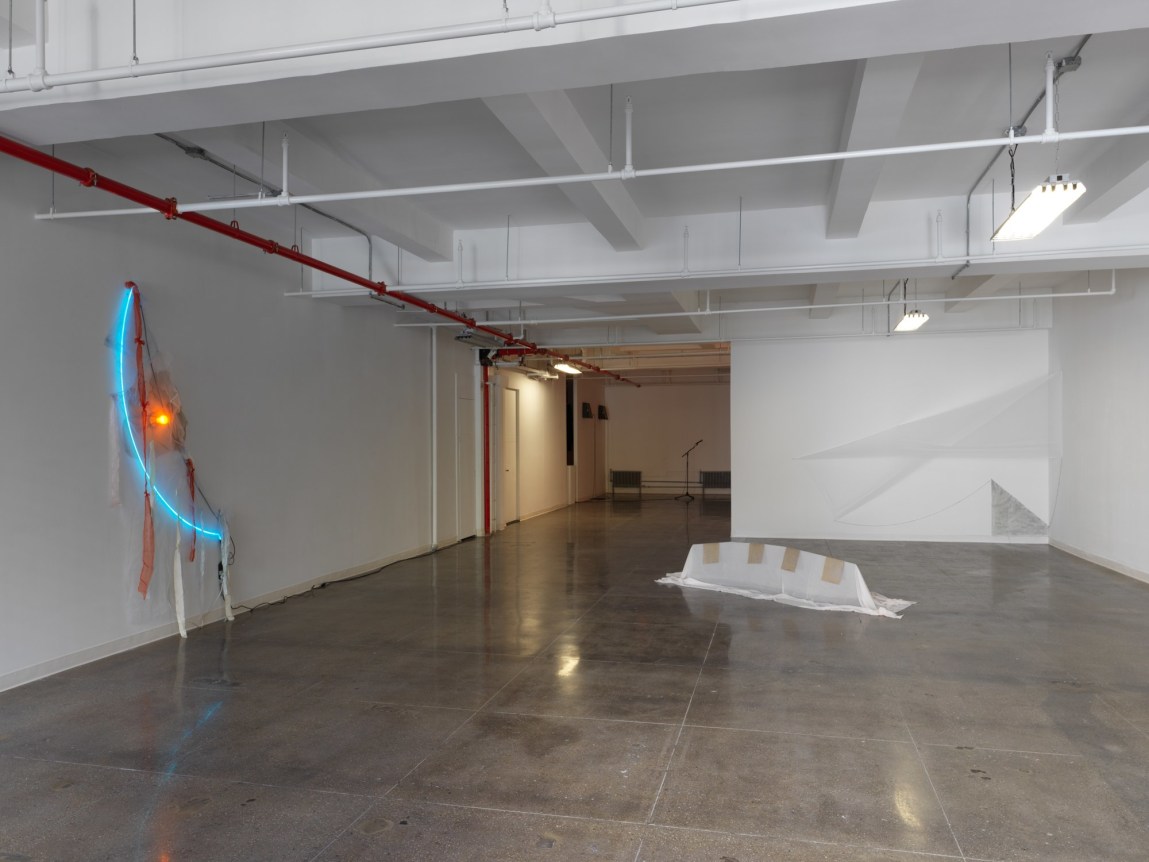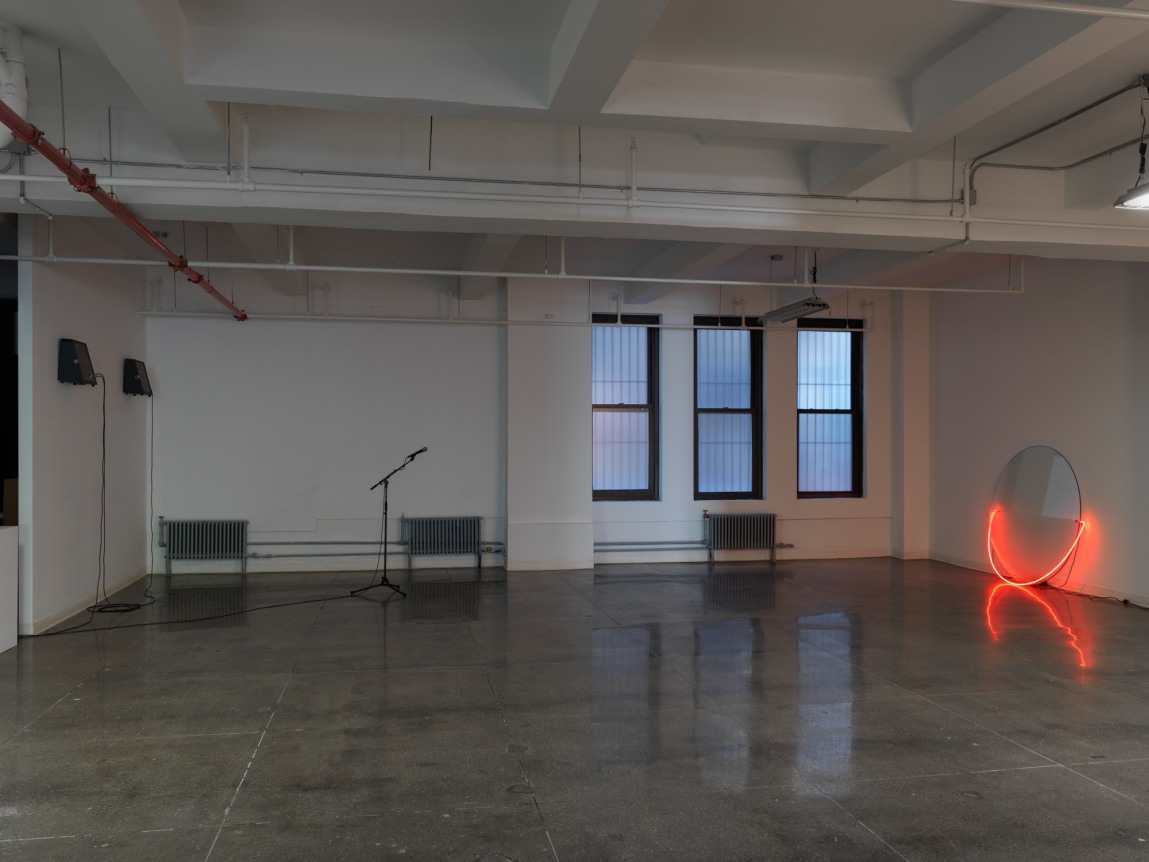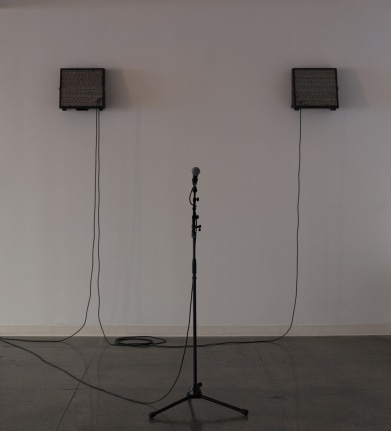Castelli Gallery is pleased to present Ethereal/Ephemeral: Keith Sonnier in the Sixties. This exhibition focuses on ephemerality as a formative principle in Keith Sonnier’s work through a display of sculpture from the 60s and 70s which mark his initial engagement with this concept/quality. In these works, Sonnier uses materials such as cloth, flocking, and even sound in ways that foreground the inherent fragility, impermanence, and mutability of these media. By making ephemerality a key component of his art, Sonnier challenged the traditional characterization of sculpture as a three-dimensional art form made from durable materials such as bronze or marble.
For instance, in Untitled (Flock and String) (1969) Sonnier applies a thin layer of Latex directly to the gallery wall, then covers it with flocking—small fiber particles that give the work a soft, mottled appearance. The piece has an unstable existence. Over time the edges of the Latex peel from the wall and tufts of flocking slough off. Although decay is the inevitable outcome of the work, the exact manner in which this decomposition takes place is governed by chance. The important role that chance plays in the work is underscored by the series of strings that hang across it, secured at points along the edge of the Latex and draped over the flocked surface. These strings are an homage to Marcel Duchamp’s seminal work, 3 Standard Stoppages (1913-14) in which the artist let fall a meter-long string onto a stretched canvas and then used the haphazard form of the fallen string to create a new metric unit. Thus in Untitled (Flock and String) Sonnier presents two types of ephemerality: entropy and chance—the unavoidable decay of organic life and the unpredictable way in which this decay occurs.
In Air to Air (1975) Sonnier presents yet another understanding of the ephemeral: insubstantiality. In this work Sonnier uses a communication transmission system consisting of two long-distance audio transmitters and a pair of microphones to create an audio connection between two separate locations. The work was first installed in 1975 as a collaboration between Leo Castelli Gallery in New York and Ace Gallery in Los Angeles, one transmitter setup in each gallery. Visitors entering the gallery, either in New York or LA, would simply see a single microphone, but would hear sounds from the other gallery, including the voices of fellow gallery-goers and the sound of traffic from the opposite coast.
Although the hardware of the communication system used in Air to Air provides a material basis for the work, the intangible radio waves that emanate between the two transmitters are its essential substance. By making immateriality a fundamental condition of the work, Sonnier radicalized his subversion of sculpture’s conventional solidity. In Air to Air sound itself becomes the sculptural medium: something that possesses a spatial quality, that takes up and shapes space in a manner comparable to sculpture.
Sonnier also used more subtle tactics to upend traditional conceptions of sculpture. For example, he abandoned the pedestal, as yet another standard attribute of the medium. Instead, his works lie prone on the floor or cling precariously to the wall, using the existing architecture of the exhibition space as a support. The artwork’s contingency on the space in which it is displayed enhances its ephemeral character—it is not an autonomous object separate from its environment; instead, the very form and dimensions of the work is dependent on the particularities of the room where it is installed.
In contesting the autonomy of the work of art, Sonnier’s practice coincided with a larger trend in art of the late 60s and early 70s that criticized the prevailing aesthetics of Minimalism. In particular, these artists rejected the rational, geometric style of Minimalism and its conception of artwork as “objects”—objects which tended to aggressively assert their presence in a space. Although this critique took many forms leading to the development of a variety of different movements including, Process Art, Conceptual Art, Land Art, Body Art, and Performance Art, these movements collectively constitute what critic Robert Pincus-Witten termed Post-Minimalism—a period in post-war art history which saw the rise of art that was typically de-centered, flexible, and open in its structure. Several major exhibitions helped to codify this art historical moment including Eccentric Abstraction (1966) at the Fischbach Gallery in New York, Anti-Illusionism: Procedures/Materials (1969) at the Whitney Museum in New York, and When Attitudes Become Form (1969) which opened at the Kunsthalle Bern in Bern Switzerland. Sonnier’s participation in all three of these exhibitions attests to the important role he played in shaping Post-Minimal sensibilities.
Keith Sonnier had his first solo show at Castelli Gallery in 1970, now, nearly fifty years later, it is an honor for us to celebrate this long relationship with an exhibition that revisits the beginnings of his groundbreaking career. We are also delighted to announce that a catalogue will be published in conjunction with the exhibition.

